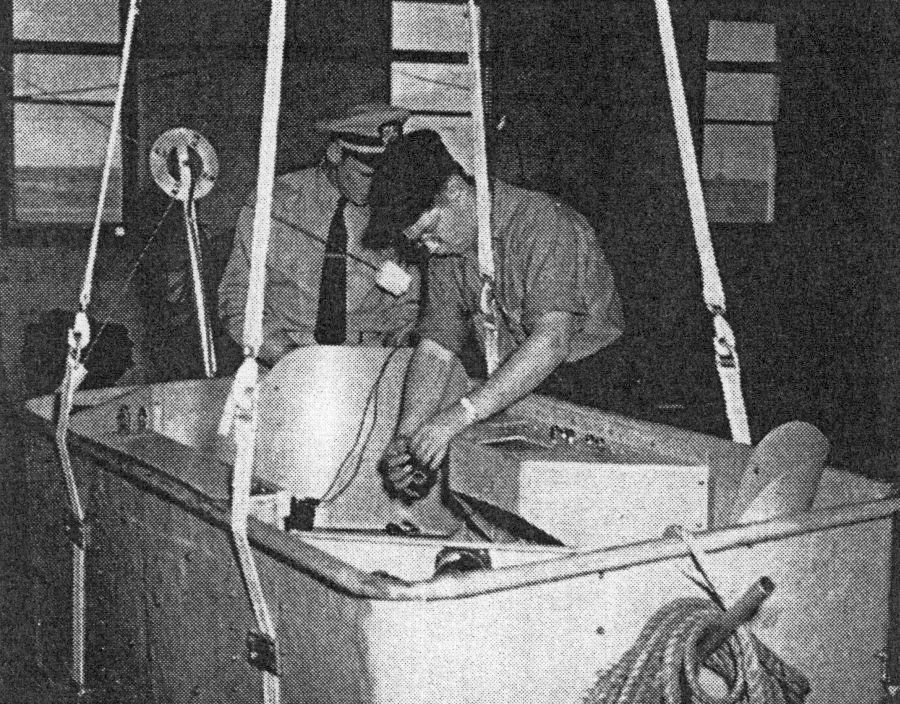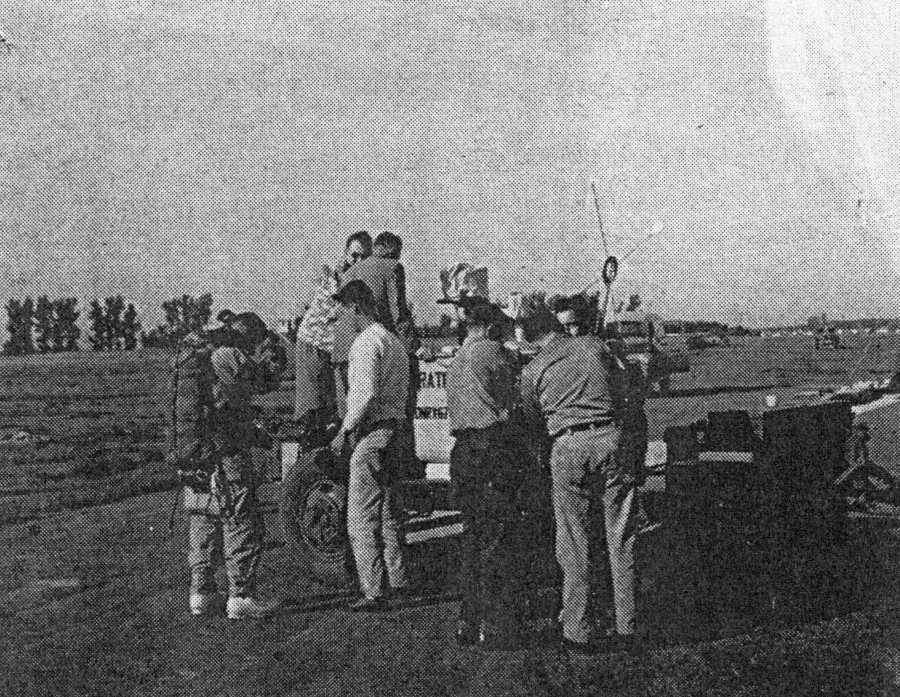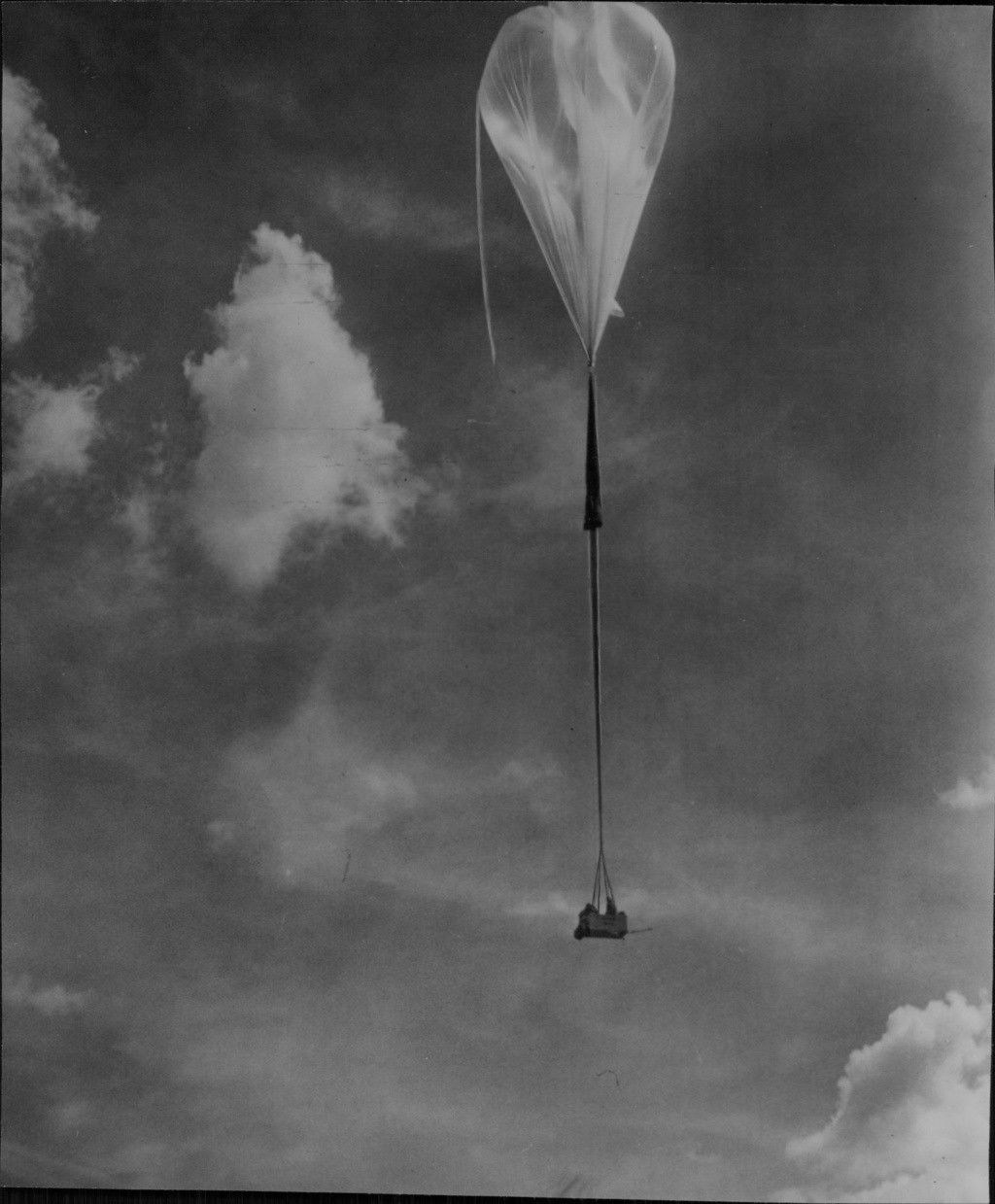Purpose of the flight and payload description
The STRATOLAB manned balloon program was born in middle 50's when the US Navy refloated a previous project from late 40's called Helios and managed by balloon pioneer Jean Piccard. It included the construction of a sealed rounded capsule, which was comissioned by the Navy to General Mills Inc., a balloon firm from Minneapolis responsible at the time of their Skyhook unmanned balloon program. After the cancellation of Helios, before making any flight in 1948 the gondola was stored at the Lakehurst Naval Air Station until the project was resurfaced seven years later as project Stratolab.
The objective of the program was to conduct research in aerospace medicine, collect geophysical and astrophysical measurements and evaluate military techniques and equipment for flight at extreme altitudes, using personnel as observers, as inexpensive servomechanisms for scientific instrumentation or simply as test subjects. Unlike the other manned program of the time -Air Force's MANHIGH- the STRATOLAB effort included allways a two men crew and three flight profiles: low and medium altitude ones to 12.000 ft and 40.000 ft respectivelly using an open gondola and the high altitude ones using the sealed gondola which reached the stratosphere itself. The scientific Officer of the project was Lieutenant Commander Malcolm D. Ross while Navy Captain Normal Lee Barr, MD, was the flight surgeon.
The system used in the medium altitude flights consisted of an open gondola for personnel, similar to that used in the low level flights along with a larger balloon, as the system would reach altitudes nearing 40.000 feet.
Aside the instrumentation to sense and indicate altitude and rate of climb or descent, the major difference was the addition of a suitable oxygen supply and cold weather clothing for the crew.
As ocurred in the low level systems a simple valve in the top of the balloon, controled manually or electrically from the gondola and an appropriate amount of ballast (sand or iron dust) allowed vertical control of the aerostat.
Because the gondola was open and its size and shape were easily varied in accordance with experimental requeriments there was a large amount of flexibility in the size, shape and weight of scientific instruments which were used by personnel in the gondola.
Another addition was a cargo parachute for use as an automatic safety device in case of a balloon failure. It linked the balloon with the gondola serving also as load line.
Details of the balloon flight
Balloon launched on: 8/10/1956
Launch site: University of Minnesota Airport, New Brighton, US
Balloon launched by: General Mills Inc.
Balloon manufacturer/size/composition: Zero Pressure Balloon General Mills - 124.000 cuft
End of flight (L for landing time, W for last contact, otherwise termination time): 8/10/1956
Landing site: Near Stevens Point, Winsconsin, US
This was the first balloon mission using the intermediate Stratolab system. The pilots were Malcolm D. Ross and Lieutenant Commander M.Lee Lewis and the objective of the flight was to photograph condensation trails from jet aircraft at a relative short distance.
Secondary measurements were physiological as part of another Navy project known as RAM (Research Aviation Medicine). The pilots worn sensors that telemetered vital variables as body and skin temperatures, electrocardiograms, respiratory rate and so on.
The flight was smoothly and succesfully conducted with the pilots piercing the tropopause and venturing to an altitude of 40.000 feet in tke lower stratosphere.
This experimental effort was the first manned balloon flight into the stratosphere since the Explorer II mission in 1935 and historically it marked a new technological era because it was the first manned stratospheric flight ever made in a plastic balloon.
External references
- Stratolab, an Evolutionary Stratospheric Balloon Project - an article by Gregory Kennedy
9465If you consider this website interesting or useful, you can help me to keep it up and running with a small donation to cover the operational costs. Just the equivalent of the price of a cup of coffee helps a lot.




